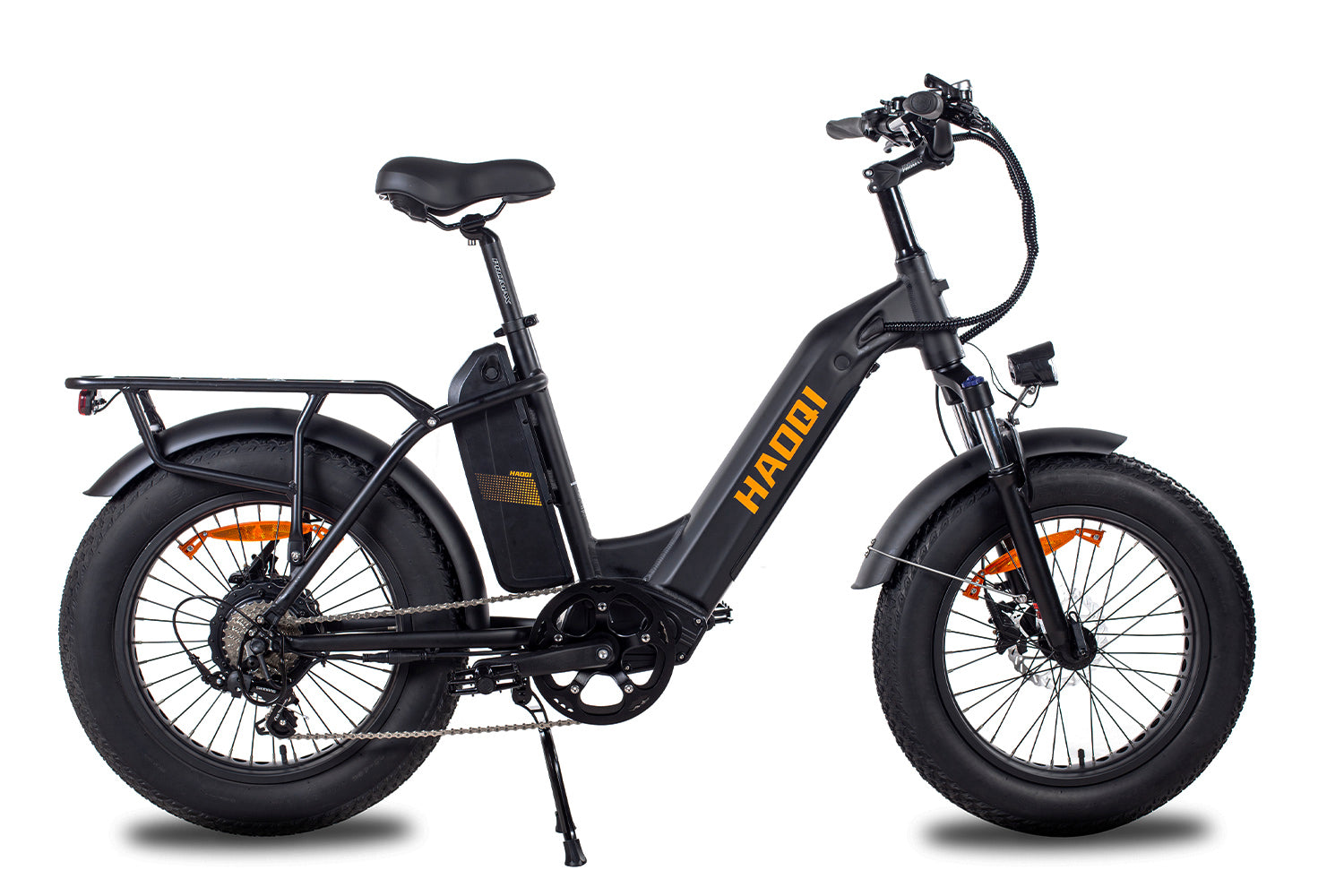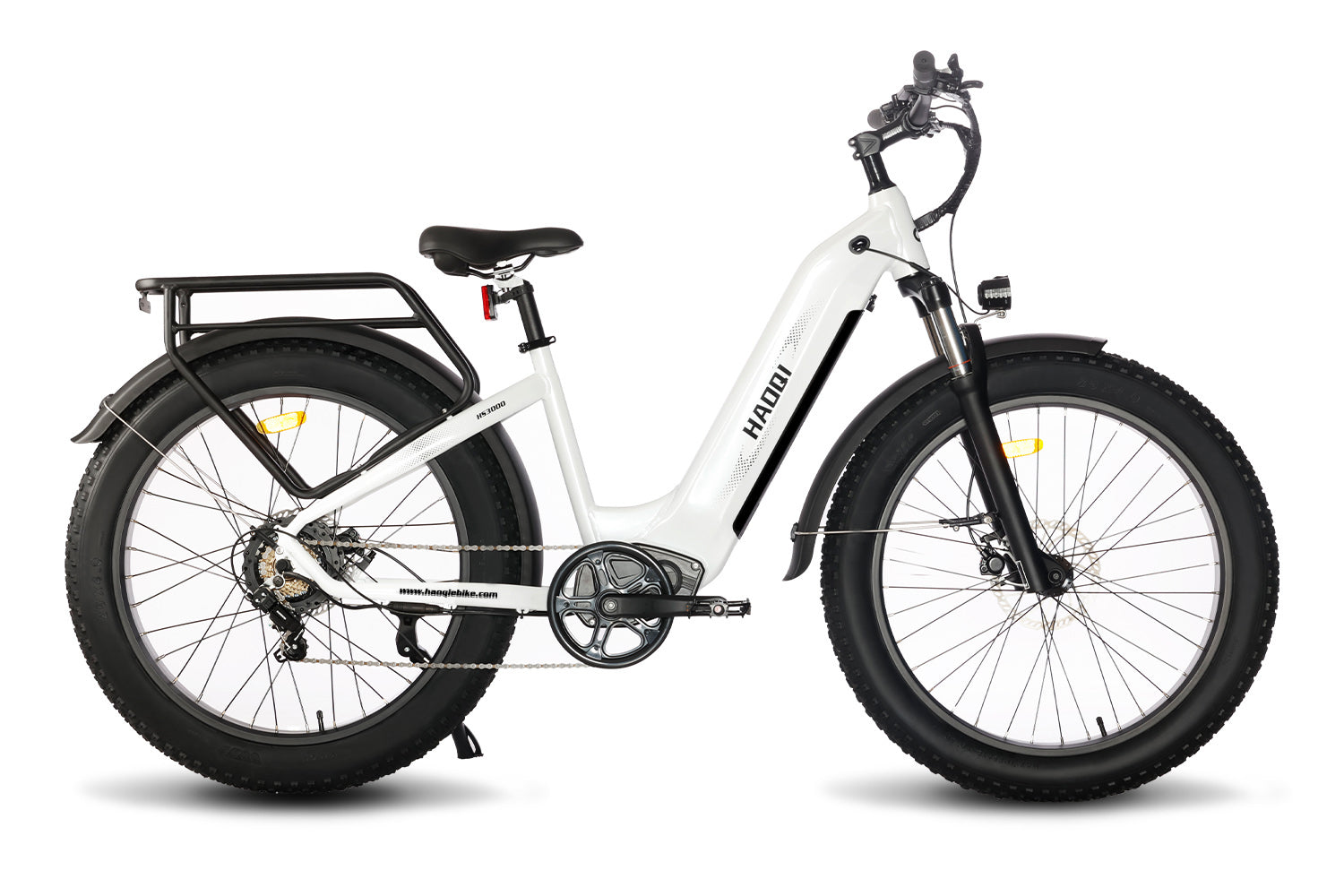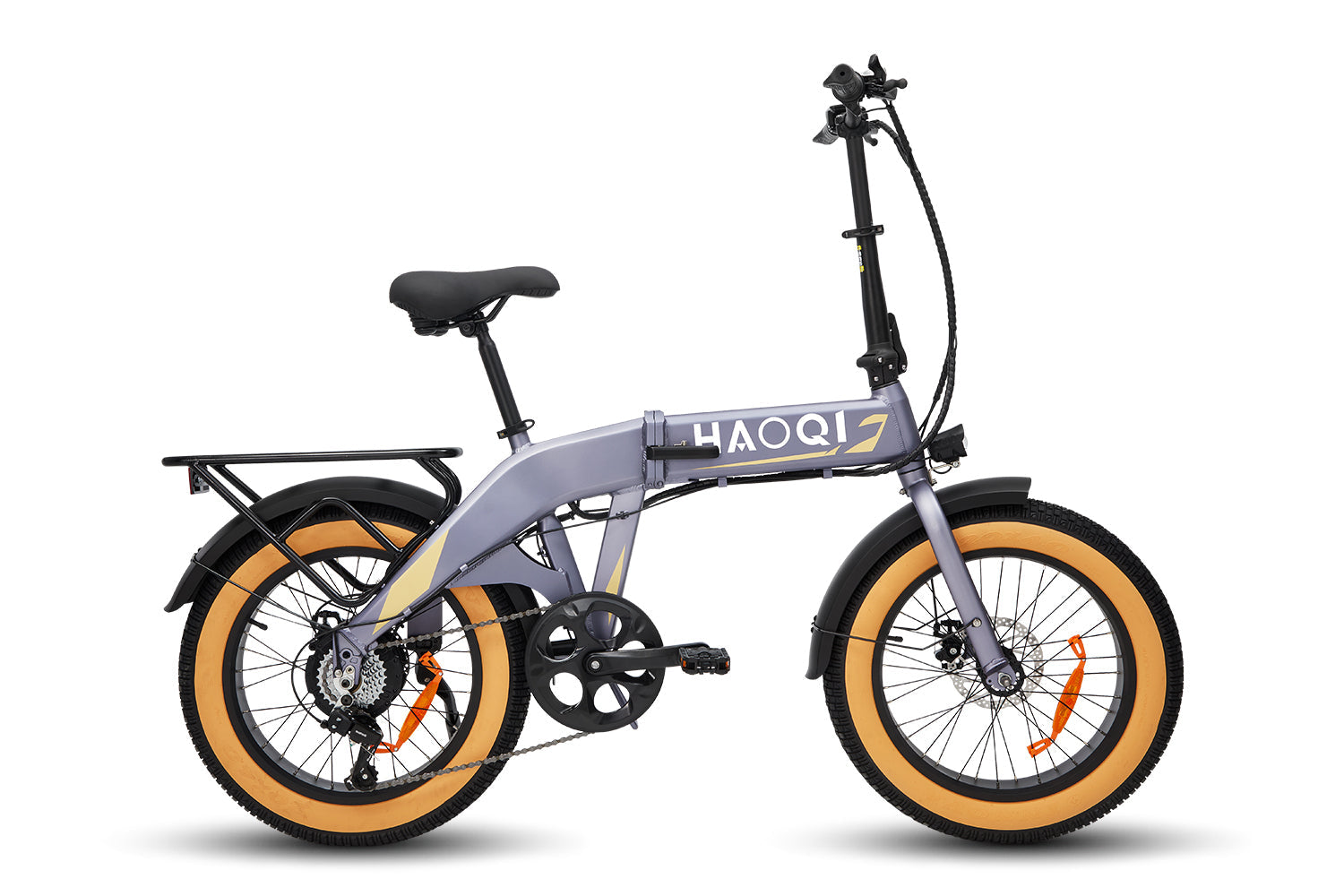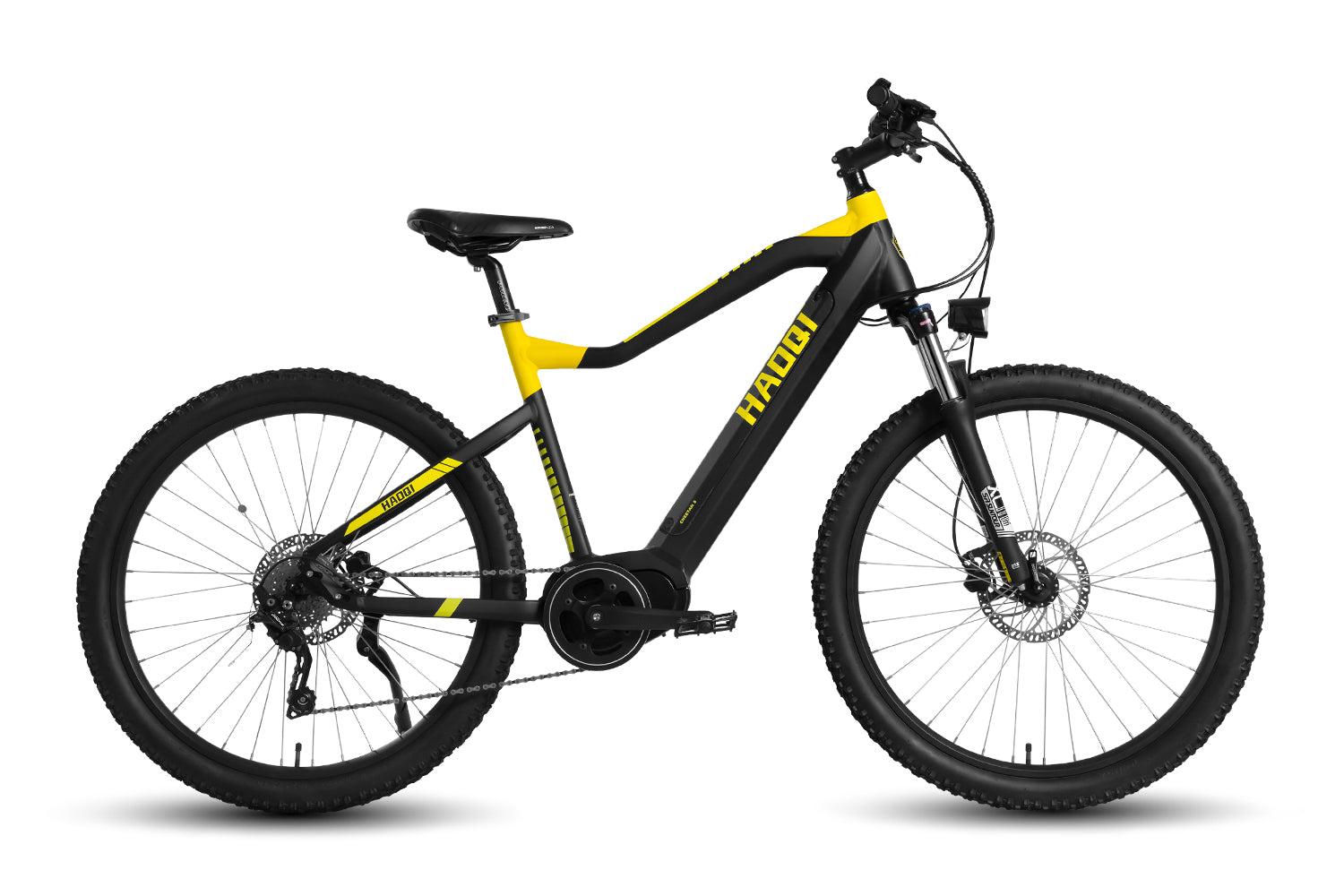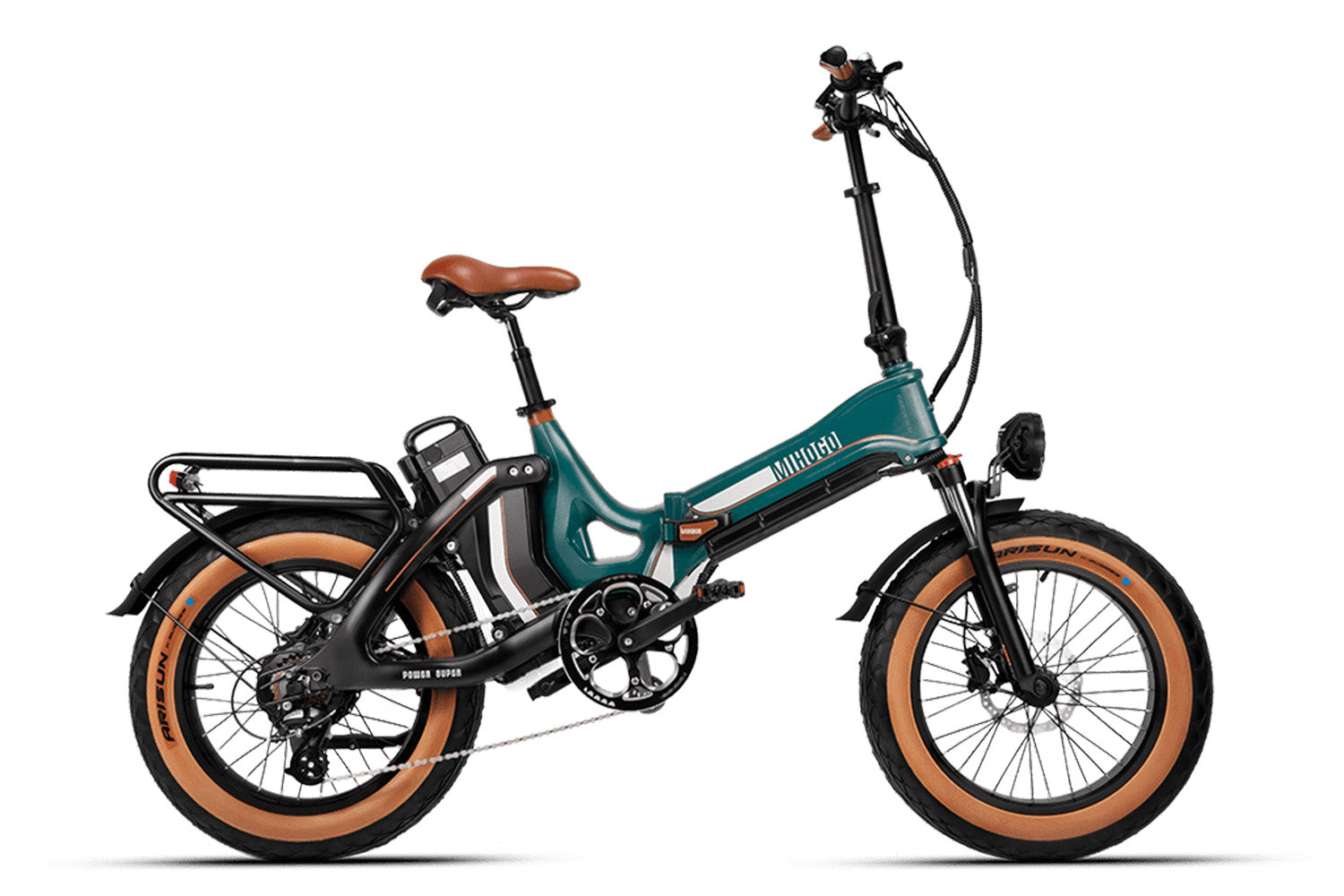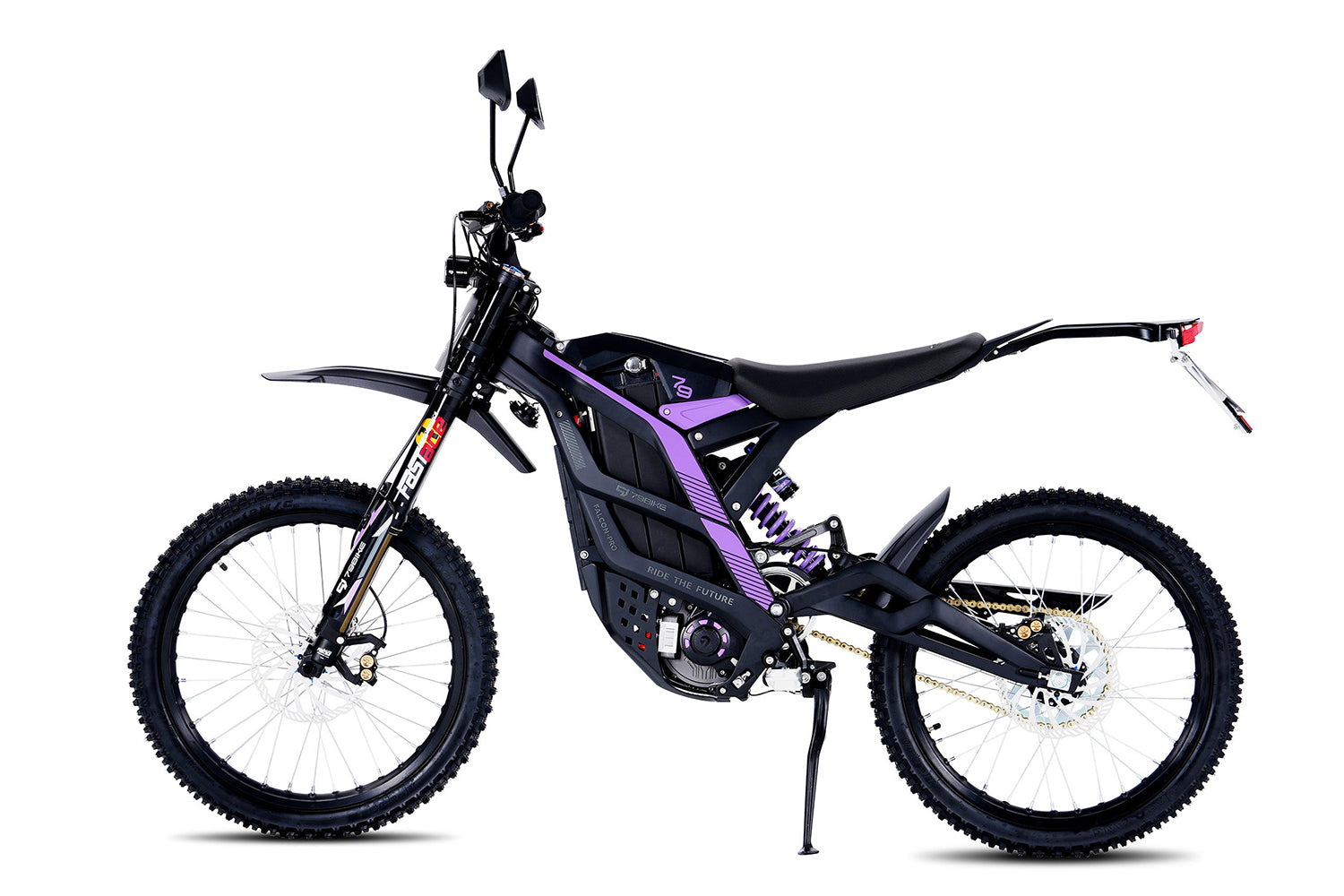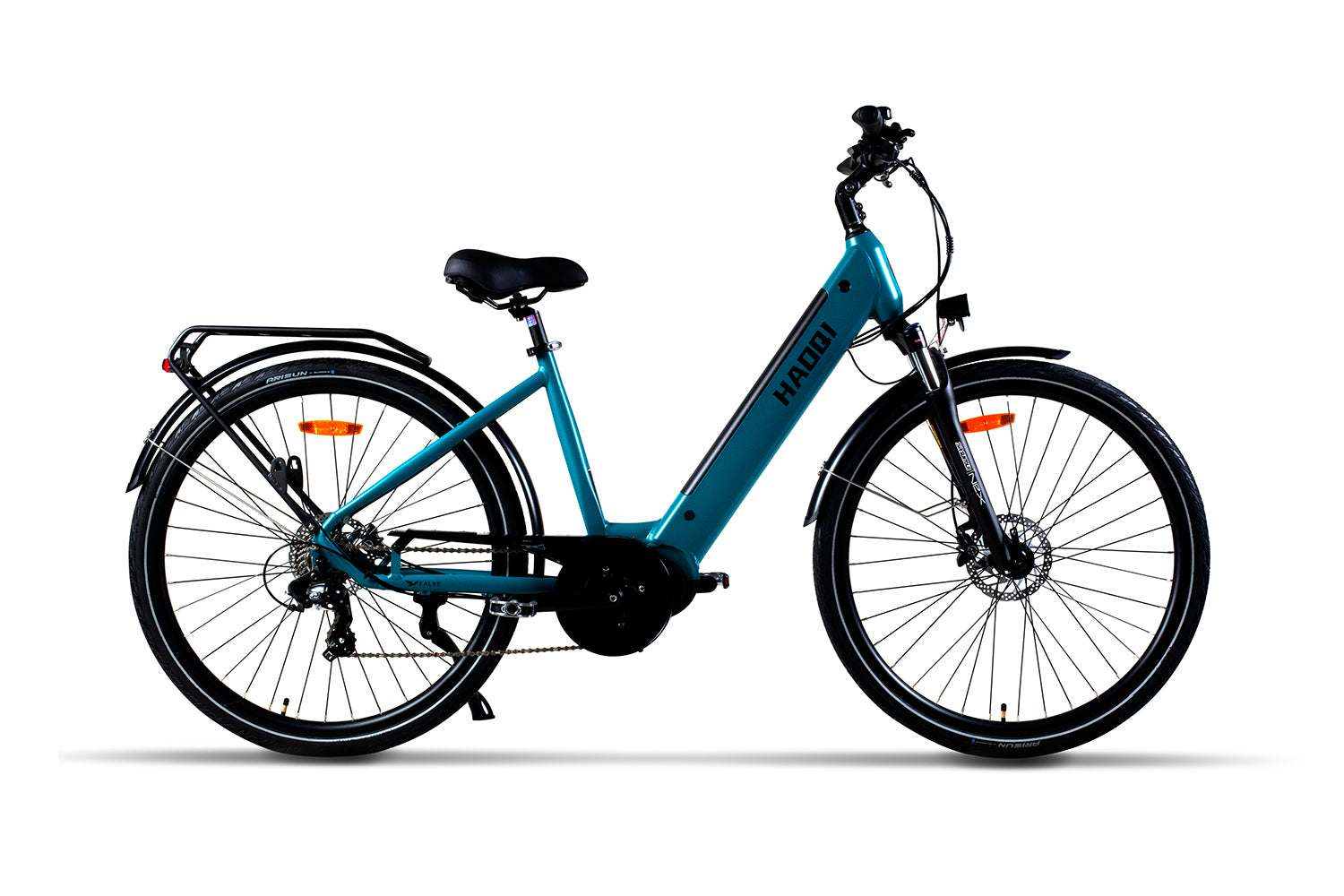-
Energy efficiency : E-bikes use minimal amounts of electricity – a full charge often costs less than 10 cents – and reduce greenhouse gas emissions by over 90% compared to cars. Haoqi e-bikes, equipped with powerful batteries and designed for long distances, further enhance these benefits, enabling extended rides on a single charge while offering environmentally friendly performance.
-
Renewable energy : Solar-powered charging stations can make e-bike use completely carbon neutral. In the U.S., about 21% of all electricity generation comes from renewable energy, including wind, solar, and hydropower. By harnessing this growing share of clean energy, e-bikes further help reduce carbon footprints and provide a sustainable alternative to fossil fuels.
-
Reducing traffic congestion : Increased use of e-bikes can reduce road congestion, reducing fuel consumption and emissions from idling time. In cities like Los Angeles, commuters spend an average of 100 hours per year in traffic jams, which generates around 30 million tons of CO₂ emissions annually. By replacing car trips with compact and efficient e-bikes, like those from Haoqi, urban areas can significantly reduce emissions and improve mobility.
call to action
Switching to e-bikes is not just an individual decision, but a collective step in the fight against climate change. Governments, companies and individuals should:
-
Support incentives for the purchase of e-bikes , e.g. through subsidies and tax incentives.
-
Invest in infrastructure , such as bike paths and solar-powered charging stations.
-
Educate the public about the environmental benefits of e-bikes to promote more sustainable mobility.
Emergency tool: E-bikes as an indispensable resource in disaster situations
Challenges in Transportation During Disasters
Natural disasters such as wildfires often cause significant disruption to the transportation network. Roads can be blocked by debris, traffic can become congested, and fuel can become scarce. These problems complicate evacuations and delay the delivery of relief supplies.
Haoqi 's all-terrain e-bikes, with their robust design and superior off-road capability, offer an effective solution. They can traverse mountain trails and rough terrain with stability, ensuring reliable mobility even in extreme conditions.
E-bikes in emergency scenarios
E-bikes in emergency scenarios
E-bikes offer decisive advantages in disaster situations:
-
Rapid evacuation : E-bikes enable people to quickly leave dangerous areas by bypassing roadblocks and traffic jams.
-
Short-distance logistics : Rescue teams and volunteers can use e-bikes to deliver essential supplies such as medicine, food and water to affected areas. Haoqi Cargo Utility e-bikes are specially designed for such operations and offer high load capacity and reliable performance even in difficult conditions.
-
Sustainable mobility : Equipped with solar chargers, e-bikes can also be used in areas without electricity and thus remain ready for use at any time.
Real Applications
E-bikes have already proven their worth in disaster-prone regions. During previous wildfires in California, volunteers used bikes to transport medicines and assist with evacuations. Increased use of e-bikes could make these efforts even more efficient and faster.
Alternative Mobility: Lessons for Urban Transport after Wildfires
Challenges in transportation after a disaster
When the devastating Los Angeles wildfires finally subsided in 2025, the true extent of the destruction became apparent. The infrastructure was severely damaged: numerous bridges connecting important traffic arteries were severely compromised, their load-bearing capacity threatened. Roads were not only torn up, but also blocked by fallen trees, burned-out vehicles and collapsed buildings.
The disrupted supply chains led to an extreme fuel shortage. Long queues formed at the few functioning gas stations, while gasoline was rationed. Public transport, which formed the backbone of urban mobility, came to a complete standstill. Buses, some of which were destroyed in the flames or damaged by falling debris, were no longer operational. Train lines that had deformed under the enormous heat made rail connections impossible.
This paralysis of the transport network left residents stranded in their neighbourhoods - many could neither reach vital services nor get to safety. Rescue workers faced immense challenges: the narrow, winding roads, especially on the affected hillsides, were blocked, making it difficult or impossible for ambulances and fire engines to get through. The restricted mobility not only delayed the distribution of food, water and medicine, but also significantly slowed down reconstruction. This further exacerbated the plight of the affected population.
E-bikes as a practical solution
-
Accessibility : E-bikes are an affordable alternative to cars or motorcycles, making them financially accessible to many people. Their ease of use means almost anyone can get going immediately, with electric assistance making it easier to tackle inclines and long distances. In addition, e-bikes require minimal maintenance compared to internal combustion engines, a critical advantage when resources are scarce after a disaster.
-
Flexibility : Narrow streets blocked by rubble that are impassable for larger vehicles are no problem for e-bikes. They can maneuver through narrow alleys and use alternative routes that have largely been spared from the destruction. This ability to bypass congested main roads ensures that people still have access to medical care, food or neighborhood assistance.
-
Scalability : E-bike sharing systems can be deployed quickly. Within a few days, companies can distribute entire fleets to strategic locations around the city. Thanks to app-based rental systems, residents have immediate access to the e-bikes - a flexible mobility solution that reduces dependence on scarce private vehicles or canceled public transport.
success stories
Cities like Amsterdam and Copenhagen , which have consistently integrated cycling into their urban planning, are showing how e-bikes can reduce dependence on cars and create more sustainable, resilient communities. Los Angeles and other regions at risk of wildfires can take inspiration from these role models.
Conclusion: The future of e-bikes lies in their versatility
The Los Angeles wildfires of 2025 highlight the need for innovative solutions to combat climate change and build resilient cities. E-bikes are a versatile response to both environmental and emergency challenges . They reduce CO₂ emissions, ensure mobility in disaster situations and offer a practical alternative to the car - an essential element for a sustainable future.
Everyone can make a contribution - whether individuals, companies or governments. By opting for e-bikes and expanding the necessary infrastructure, we are actively influencing climate protection and preparing for future challenges.
Let's cycle together to a greener, safer future! 🚲💚

